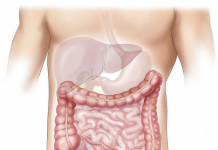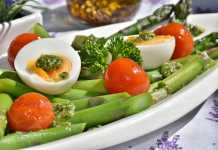 The concerns about healthy diet are growing as the mankind packs on more pounds. Worldwide obesity plague drives scientists to seek out new ways to fight excessive weight. The scientists in their crusade against obesity encountered many eye-opening experiences. For example, Shropshire doctors revealed why almost all people had been neat and healthy long time ago.
The concerns about healthy diet are growing as the mankind packs on more pounds. Worldwide obesity plague drives scientists to seek out new ways to fight excessive weight. The scientists in their crusade against obesity encountered many eye-opening experiences. For example, Shropshire doctors revealed why almost all people had been neat and healthy long time ago.
Medieval People Were Healthier?
It turned out that diet in the Middle Ages had been a good deal healthier than now. It is even more surprising if you think that medieval people had no chance to eat fat-free diary products, cholesterol-free butter, sugar substitutes and other today’s food. Undoubtedly, an average individual in that age got significantly more calories than we do now. But at the same time the nutrients were absorbed differently and people used greater energy for their activity.
The Secret to the Slim Body
The medieval secret for slim figure is vegetable dishes, low-fat foods and light beer. Compared to what we have on our tables now – processed foods high in starch – the Middle Ages diet sounds like a remedy for our stomach. 12-hours working day also played an important role in the metabolism of medieval people, helping to maintain a better balance between energy consumption and expenditure.
Medieval Diet vs. Mediterranean Diet
The head of the research, Dr Rodger Henderson from Shropshire College, believes that the way people ate in 10-18 centuries supports not only slim figure but also strong immune system. The resistance that helped people to survive the outbreaks of plague without any remedies or vaccination provides evidence for the idea. Scientists claim the medieval diet is even healthier than the renowned Mediterranean one.
Medieval People’s Diet
According to historians, an average medieval peasant’s daily diet “weighed” 3.5- 4 thousands of calories, including two hunks of bread, a 200g piece of fish or meat, boiled turnip or beans and 2.5 pt (1.2 liters) of beer to wash it all down. Only the rich could afford fruit, cereals, olive oil, let alone wine. The poor had to go on short rations. With 12-hours of physical labor the peasant diet brought the stunning result of no excess pounds.
Sugars Made Us Fat
Experts believe that the major difference between contemporary and medieval diet lies in the amount of monosaccharides. While the food of earlier centuries contained a little of simple sugars, lots of them are now provided by pastries, candies and other sweets.
Is It Only Diet?
The argument sounds really interesting but one-legged because medieval peasants owed their slim bodies to both their diet and lifestyle. The reality of hard labor was important. What are our chances to lose weight sticking to the medieval diet while sitting at the computer day in day out instead of performing hard physical labor?










